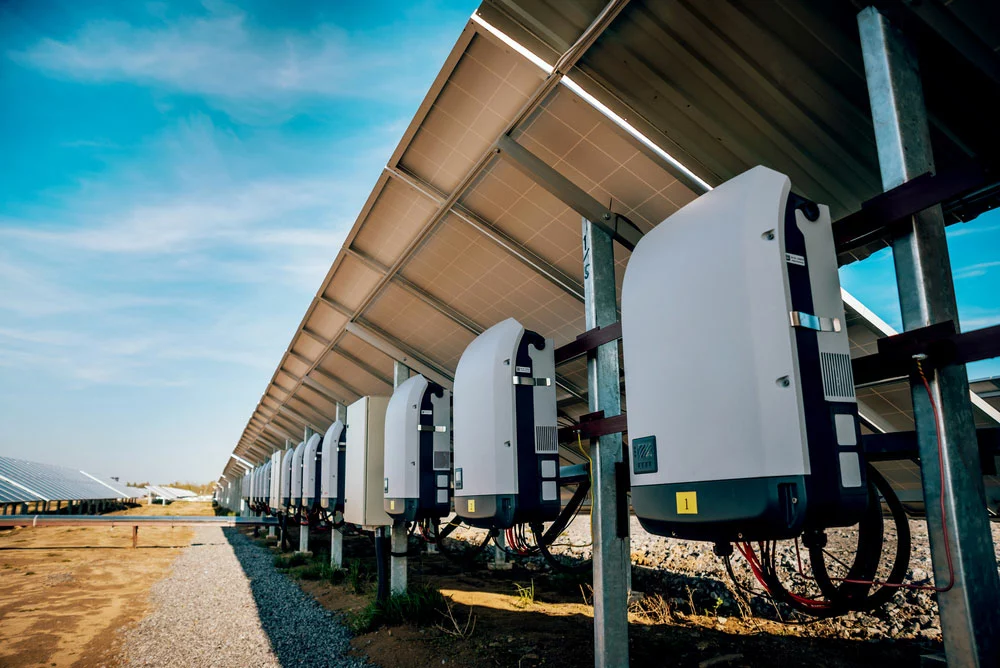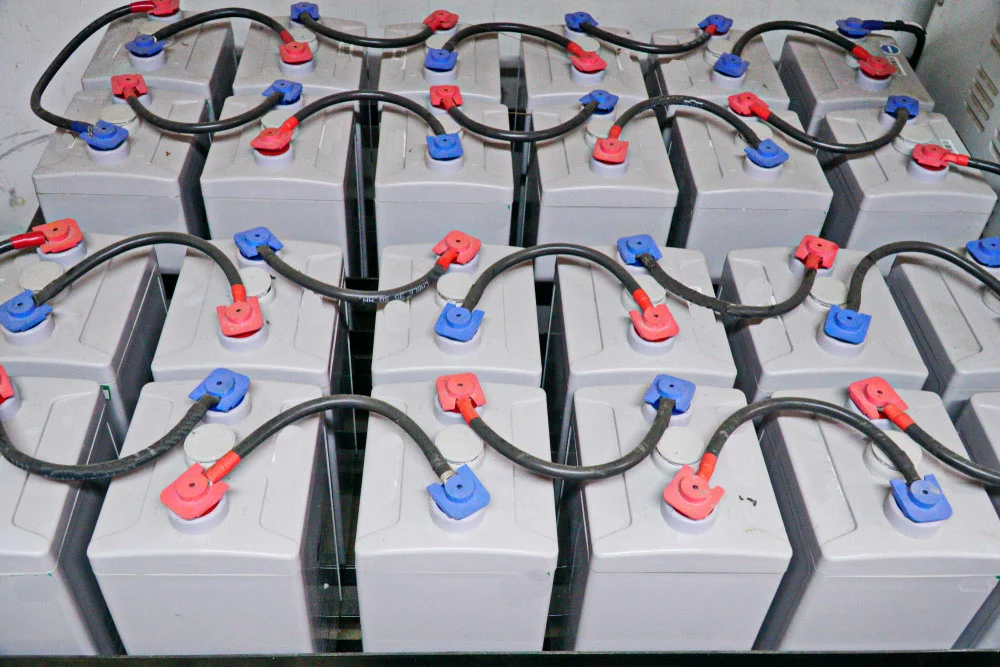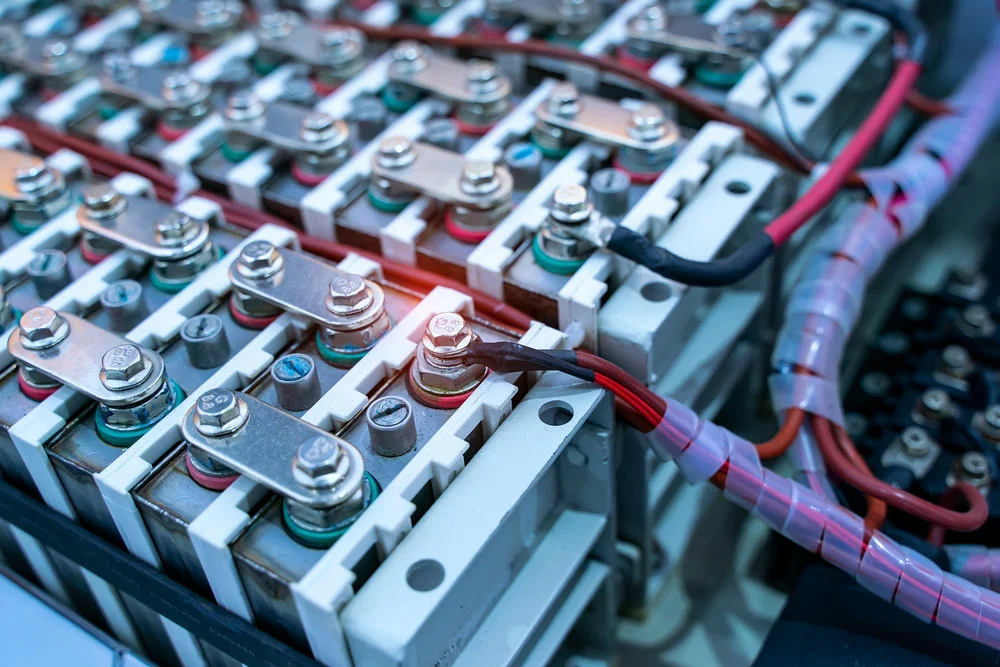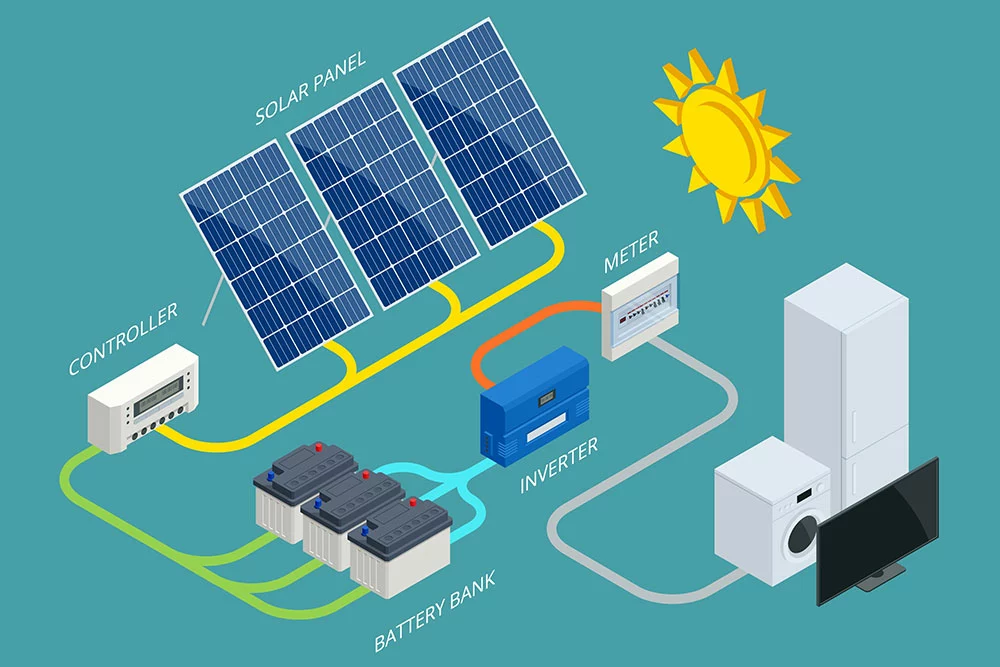Choosing the best solar system batteries is crucial for optimal battery performance.
Whether you are embarking on a new solar installation or looking to upgrade your existing setup, this guide will provide you with all the information you need to make an informed decision.
Read on to learn about the different types of batteries available in solar systems and some tips for picking the ideal Battery for your needs.
With this information, you can be sure that your solar system is working at its full potential – no matter what Mother Nature throws your way.
What are Solar Batteries?
Solar batteries, also known as PV batteries, store energy from solar panels to use later or during power outages.
These batteries effectively capture the energy your panels produce when exposed to sunlight.
Then, batteries release the stored energy for you to use when panels are not producing power, such as in the evening or overcast days.
How Does a Solar Battery Work?
Solar batteries capture the energy generated from your solar panels during the day and store it in direct current (DC) energy.
Then, a power inverter converts that DC energy into AC so you can use it to power your appliances and devices.
Another key element of solar batteries is charge controllers; these machines stop the batteries from overcharging or draining at night.

A solar inverter
What Are the Different Types Of Batteries?
Flooded Lead Acid Batteries
Lead acid batteries are called “wet cell” batteries containing a liquid electrolyte. If you damage the Battery, the electrolyte may spill out.
They’ve been around for over 150 years and are still affordable and reliable.
They are also among the most environmentally friendly batteries, with 99% recyclable materials.
However, these batteries have certain drawbacks, including special maintenance requirements due to the production of potentially hazardous gas.
They may be a good choice for those who don’t mind regular maintenance on their battery systems.

Flooded Lead Acid Batteries
Absorbent Glass Mat (AGM) Batteries
These batteries are a type of sealed lead-acid batteries that have become an increasingly popular choice in recent years due to their many advantages.
These batteries have a fiberglass mat that absorbs the electrolyte. Their plates can be flat like those in traditional flooded lead-acid batteries or coiled into a spiral shape similar to those in Optima batteries.
One of the main advantages of AGM batteries is their lower internal resistance, allowing them to tolerate higher temperatures and discharge more slowly under heavy loads.
These leak-proof batteries require less or no ventilation, making them perfect for solar energy systems.

AGM battery
Gel Batteries
Gel batteries are lead-acid batteries that use fumed silica as a thickening agent in the electrolyte, making them stronger and more durable than other types.
In addition to being extremely sturdy, they also work well in hot and cold temperatures and have excellent life cycles.
However, gel batteries have some drawbacks: they are ventless and self-discharge faster than flooded lead-acid batteries.
Furthermore, they tend to be more expensive than other types of lead-acid batteries, making them a less accessible option.

Gel batteries
Lithium-ion solar Battery
Lithium batteries have become increasingly popular in recent years, particularly for use in the solar industry.
One major advantage of using lithium-ion batteries is their long lifespan, with some lasting up to 3 years or more.
They are also known for holding a large amount of energy in a small space and having a long battery life without requiring much maintenance.

Lithium-ion batteries
How To Choose the Best Solar Battery
Battery Capacity
The usable capacity of a solar battery is measured in kilowatt-hours (kWh).
Generally speaking, the higher the storage capacity, the more expensive the Battery.
However, a higher capacity means the Battery will last longer and provide more power.
So if you have a large home or business with high energy needs, you may want to invest in higher solar battery storage.
Coupling Options
Regarding solar batteries, there are two main coupling systems: AC-coupled and DC-coupled systems.
AC-coupled batteries work well as additions to an existing solar power system. However, they require energy conversion multiple times before using them in your home.
First, from (DC) to (AC) in the solar panel, then back to (DC) for storage in the Battery, and finally back to AC for use.
DC-coupled batteries only require one conversion from DC to AC, making them more efficient.
They also allow for the use of solar power during grid outages. However, they often require more complex installation and can potentially be a more expensive option.
Depth of Discharge
Depth of Discharge, or DoD, describes the energy drained from a battery relative to its original capacity.
Maintaining efficient performance over time is a critical factor in batteries.
Therefore, manufacturers often limit DoD to ensure that the Battery will continue to perform reliably over the long term.
For example, the industry standard is typically between 80% and 100% for lithium-ion batteries and 50% for lead-acid options.
Power Rating
The power rating of a solar battery is measured in watts (kW). This rating shows how much power the Battery can output at any given time.
A higher power rating means that the solar Battery can provide more power at once, which is important if you have appliances or devices that require a lot of energy (like an air conditioner).
Round-trip efficiency
The round-trip efficiency of a battery refers to the amount of energy you can after charging.
The industry average for this is around 80%, but some batteries may have higher or lower efficiencies.
A higher round-trip efficiency results in the Battery generating usable energy more effectively.

Isometric Solar Panel cell System. Note the solar batteries
Best Type of Battery for 2022
1. VMAXTANKS 12-Volt 125Ah AGM Deep Cycle Battery
This Battery is our top pick, with all the solar batteries contending for your attention.
This deep cycle absorbed glass mat (AGM) battery is one of the best solar batteries available and is commonly used in the solar storage industry.
The Float Service life of this AGM battery is between 8 to 10 years. Other features include:
- 12V 125Ah deep discharge battery.
- Plates made to military-grade standards and 8mm screws that hold everything in place.
- This product is built with the ability to recombine 99% of its parts, and it doesn’t emit any harmful gases.
- The Battery performs best in colder climates, so you don’t have to worry about power, even on cloudy days.
2. Renogy Deep Cycle AGM Battery 12 Volt 100Ah for RV
The Renogy Deep Cycle AGM 12 Volt is a solar battery that makes an excellent addition to your solar system. Its bulky build means it can store large amounts of energy, making it ideal for powering your home or business.
The following are a few things you should keep an eye out for when using this Battery:
- Avoid deep charging these batteries, especially when they are connected in series.
- Make sure to charge solar batteries with the specified voltages.
- The recharge capacity should be 1.1 to 1.5 times the discharge capacity.
- The batteries work best for solar-powered marine applications and off-grid solar systems.
3. Panasonic EverVolt
Panasonic is a leading battery manufacturer with a history of quality products. Panasonic’s solar batteries,
EverVolt, provide AC- and DC-coupling options.
You can use them for an existing solar panel system or include the batteries in a new installation.
Pros
- Options are available for both new and existing solar panel installations
- Comes with four models that can be stacked on top of each other to increase the total capacity
Cons
- Lacks depth of discharge information
- Guarantees that capacity will only drop to 60% by the end of the warranty
4. LG Chem RESU-10H
The LG Chem RESU-10H is a highly favored solar battery for its reliability.
Backed by one of the most established electronics companies, it stacks existing solar systems and has high round-trip capacities at 94.5%.
Pros
- Outperforms most of the competition when it comes to NMC round-trip efficiency
- Perfect for homeowners who don’t use much energy
Cons
- End-of-warranty capacity is only 60%
- A lower throughput clause could terminate the warranty prematurely
5. Generac PWRcell
The Generac PWRcell is a large, modular battery that uses DC power.
With 96.5% efficiency, it’s one of the best energy storage options available today for new solar systems.
Pros
- This one has some of the highest round-trip efficiencies
- This product includes a protective cabinet, making it ideal for indoor or outdoor installation
Cons
- This product contains cobalt, which can be difficult to recycle
- It can be challenging to install on an existing solar power system
6. Enphase IQ
Enphase is an industry leader in solar inverters, and the Enphase IQ solar battery is integrated with this same technology.
The IQ works with current solar systems and gives you an accurate read of your power consumption.
Pros
- Can use either a gas-powered or solar generator
- This product comes with two battery sizes to fit most existing solar systems.
Cons
- Requires systems with Enphase inverters
- Lower cycle clause
Summary
Now that you know about the different types of solar batteries on the solar market and their pros and cons, you should be able to pick the right Battery for your needs.
Remember that when it comes to solar batteries, you get what you pay for, so be prepared to spend a bit more for a quality product.
That’s all for this article. Thank you for your time.
